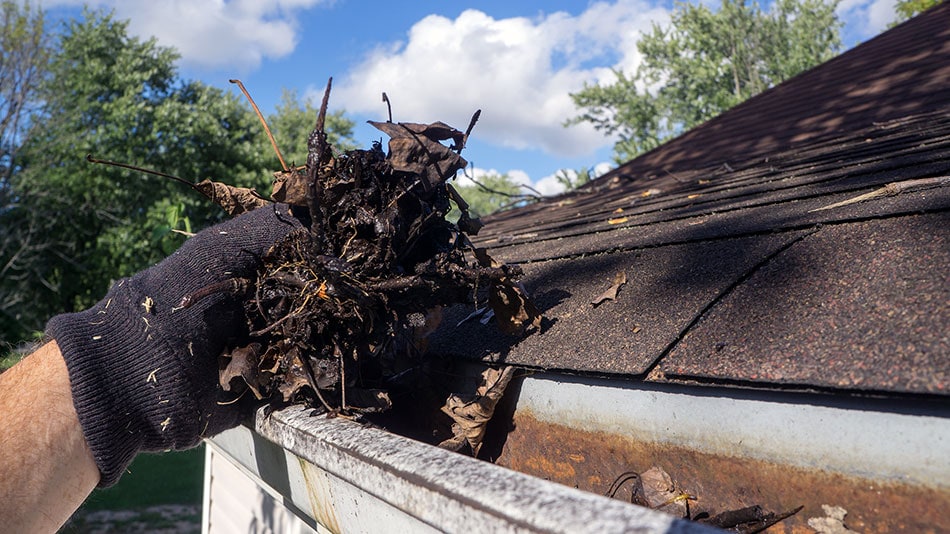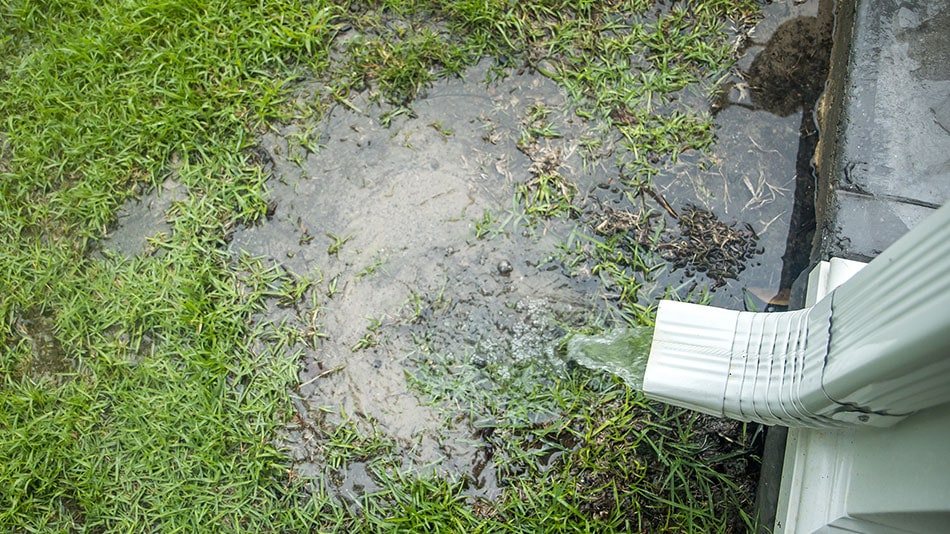6 Simple Ways to Prevent Basement Flooding

Share this Post
Basement flooding usually occurs when groundwater finds the path of least resistance. That path could be a crack in your foundation wall or slab floor. It could also come up through the cove joint between your wall and floor. Water can find its way through gaps in concrete steps, window wells, or cellar storm doors.
There are six things you can do to prevent basement flooding. If any of these suggestions fail, it may be time to call a basement professional. But before you do, give these suggestions a try. You could solve your problem with little or no money.
Table of Contents
1. Roof Gutters
Clean out gutters of all dead leaves, loose twigs, and acorns which can dam up and restrict water flow. The debris can block the water from entering the downspout. Water will fill the gutter and flow over the side to the ground. During a large storm, rainwater can amplify ground saturation around your house in less time. The weight of water in the soil can increase pressure around your home.

In the northeast United States, it rains on average 53.3 inches a year. That is a lot of rainwater to exploit every nook and cranny around your foundation. If you decrease the ground saturation, then you reduce the ground pressure. You will make it more difficult for water to push its way through. Clearing your gutters is the first good step in preventing flooding in your basement.
2. Downspouts
Downspouts can also get clogged with debris that accumulates in your gutter. The same dead leaves and twigs can jam in a downspout and push water through seams or back water up to the top. Insert a long water hose with a high-pressure nozzle into the downspout from the roofline. Turn on the water hose. The force of the water should be strong enough to push debris all the way through.

Most homeowners have a simple splash block at the bottom of their downspouts. The splash block is doing nothing to prevent ground saturation. All that rainwater you divert from your roof, through your gutters, and out the downspout is in the ground. The same ground we are trying to prevent from saturating and basement flooding.
The best way to divert water from the roof to the ground is to connect the downspout to a dry well. A dry well begins with a drainage pipe buried in a trench and packed in stone. The pipe runs at a gradual downward pitch at least 15 feet or more from the downspout until it reaches a bubbler pot. The bubbler pot helps water percolate into the hardpan clay soil. In the hardpan clay, water will migrate away from your house.
3. Grade the Property
If you find your yard sloping towards your house, you may already have basement flooding. It is always wise to have a lawn that slopes downward away from the house at one inch per foot for 10 feet. It can help to keep average storms from overwhelming your basement.
4. Septic Tank
Sometimes we forget when last the septic tank was pumped clean. All used water from showers, bathtubs, sinks, dishwashers, washing machines, and toilets ends up there. Then, combine a torrential storm to flood the ground surrounding your property, including your over-full septic tank. You have a recipe for disaster.
Make sure you keep your septic tank clean with timely spring cleanouts. Most septic service professionals will ensure you get a courtesy reminder every 2 to 5 years.

5. Sump Pump
Suppose you own a submersible sump pump inside a subfloor sump basin. Test it once a year. Sump pumps are machines. Machines break, so don’t get complacent about your sump pump’s mechanical condition. Pour a gallon of water into the basket to see if it turns on. If not, check if it is getting power. Make sure the fault protector is in the correct position. You may have to push the reset button. Move the float up and down to ensure the pump switch is not stuck. Clear any debris from the bottom of the basket with a wet vac. If all else fails, replace immediately.
A spare portable sump pump can be handy during emergencies to minimize flood damage. Connect a water hose to the pump and lead the hose outside, far from the house. Ensure the pump is in the lowest part of your basement, where water tends to pool up the most, and connect to a power source.
6. Backup Battery or Generator
A sump pump backup battery can give you peace of mind when the power goes out during a big storm. Depending on the severity of the problem, a backup battery can help for 2 to 5 days, sometimes an entire week. Unlike a generator, it does not rely on gas or propane to run, and it is a more affordable solution.

A generator can power an entire house and your sump pump. You can continue to have heat and hot water and keep food cold in the refrigerator. It is more expensive because of the rising fuel cost, but the convenience is worth it for some. Home standby units need installation and maintenance costing $20,000 or more. Depending on where you live, you may not have much of an option.
Sometimes a flooded basement is more than having your gutters and downspouts clogged. We have found homes with a perfect sloping lawn managed by responsible homeowners to have a flooding basement still. Call us if you need a basement waterproofing expert to help you with your water problem.
Schedule a free, no-obligation inspection and quote at no cost.
FAQ
Why is my basement flooding?
Heavy rainfall, broken pipes, and inadequate drainage systems contribute to basement flooding.
How can I prevent basement flooding?
Properly maintain your home’s plumbing and drainage systems, install a sump pump, and ensure your gutters and downspouts are working properly.
What should I do if my basement floods?
Turn off the electricity in the affected area, remove any valuable items, and call a professional to assess the damage and make repairs.
How can I tell if my sump pump is working properly?
A sump pump should turn on and off automatically when water levels rise and fall. You can also test it by pouring water into the sump pit.
Can I fix a flooded basement myself?
It is not recommended to fix a flooded basement yourself. It is best to call a professional to assess the damage and make repairs.
How long does it take to fix a flooded basement?
The time it takes to fix a flooded basement will vary depending on the extent of the damage. A professional will be able to give you an estimate.
What are the dangers of a flooded basement?
Flooded basements can be dangerous due to the potential for electrical hazards, mold growth, and structural damage.
How much does it cost to fix a flooded basement?
The cost of fixing a flooded basement will vary depending on the extent of the damage. A professional will be able to give you an estimate.
Will my insurance cover the cost of a flooded basement?
It depends on your insurance policy. Some policies may cover the cost of repairs, while others may not. Be sure to check with your insurance company.
Are there any long-term effects of a flooded basement?
A flooded basement can lead to mold growth and structural damage if not properly repaired. It can also lead to health problems if the mold is not removed.